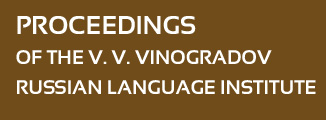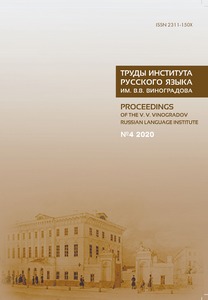STRUCTURAL MORPHOLOGICAL ANALYSIS AS A CRITERION FOR DISTINGUISHING HOMONYMY AND MULTIFUNCTIONALITY OF A WORD
Abstract:
The article examines various groups of lexical units connected in a broad sense by transpositional relations. Traditionally, transpositional phenomena in the part-of-speech system are described as the processes of “transition” from one part of speech to another. Most importantly, these include cases of substantiation of diff erent lexical and gramma tical classes of words, adjectivation of participles, adverbialization of various word forms, “transition” of the content words into the function ones. The focus is usually on the de gree of the completeness/incompleteness of the process, during which the word loses the properties of the original part of speech, and the fact of the occurrence/non-occurrence of obvious grammatical homonyms. In the article, these processes are compared not so much in terms of the patterns of the derivation itself, but in terms of the linguistic prac tice of describing its result, that is, the linguistic interpretation of the transposition itself. This interpretation is directly related to the problem of word identity and the problem of establishing homonymy of different lexical units after answering the question of where the variation of a linguistic element ends and the systemically significant opposition of different elements of the linguistic structure begins. The peculiarity of the approach to the material consists in recognizing the priority of the formal-grammatical approach, in which the attention is focused on the final com ponents of the word form, isolated taking into account not only functional (word- and form-building), but also motivating structures, which present varieties of morphological form.


